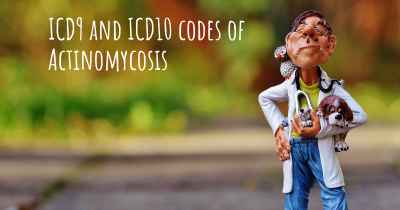4
How is Actinomycosis diagnosed?
See how Actinomycosis is diagnosed. Which specialists are essential to meet, what tests are needed and other useful information for the diagnosis of Actinomycosis

Actinomycosis is a rare bacterial infection that primarily affects the soft tissues and organs of the body. Diagnosing actinomycosis can be challenging due to its nonspecific symptoms and resemblance to other conditions. However, several diagnostic methods are available to identify and confirm the presence of actinomycosis.
Medical History and Physical Examination: The initial step in diagnosing actinomycosis involves a thorough evaluation of the patient's medical history and a comprehensive physical examination. The doctor will inquire about the symptoms, duration, and any potential risk factors or recent infections that may contribute to the diagnosis.
Imaging Tests: Imaging techniques such as X-rays, computed tomography (CT) scans, and magnetic resonance imaging (MRI) are commonly employed to visualize the affected areas. These tests help identify the presence of abscesses, sinus tracts, or other characteristic signs of actinomycosis.
Microbiological Analysis: To confirm the diagnosis, a sample of the affected tissue or fluid is collected and sent to the laboratory for microbiological analysis. The sample is cultured to isolate the causative bacteria, which is typically a species of Actinomyces. This process may take several days or weeks, as the bacteria grow slowly. Additionally, molecular techniques like polymerase chain reaction (PCR) may be used to detect the genetic material of Actinomyces species.
Biopsy: In some cases, a biopsy may be necessary to obtain a tissue sample for analysis. A small piece of the affected tissue is surgically removed and examined under a microscope. This helps identify the characteristic sulfur granules, which are aggregates of bacteria and inflammatory cells, confirming the diagnosis of actinomycosis.
Blood Tests: Blood tests are not specific for actinomycosis but can provide supportive evidence. Elevated levels of certain markers, such as C-reactive protein (CRP) and erythrocyte sedimentation rate (ESR), may indicate an ongoing infection or inflammation.
It is important to note that actinomycosis can mimic other conditions, such as tuberculosis or certain types of cancer. Therefore, a multidisciplinary approach involving infectious disease specialists, radiologists, and pathologists is often necessary to reach an accurate diagnosis.
Diseasemaps
CT, MRI, BLOOD DRAW, Gram-positive bacteria stain blue when this stain is applied to them.
Posted Apr 22, 2020 by Shanei 600








